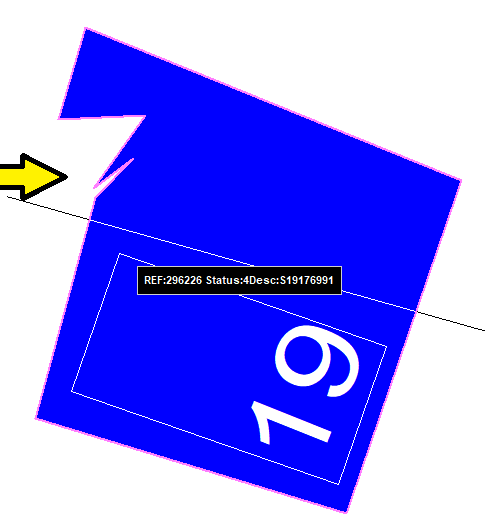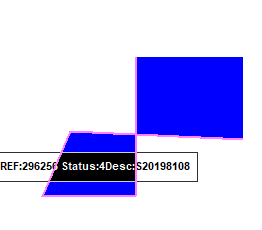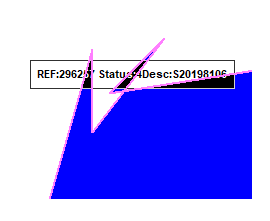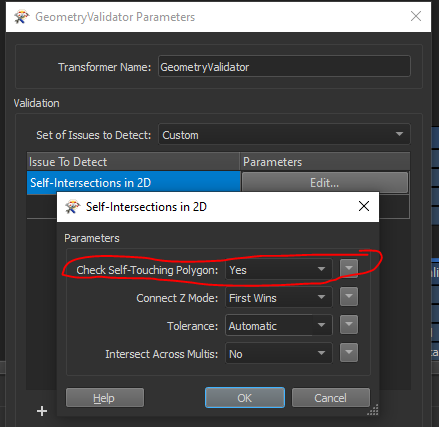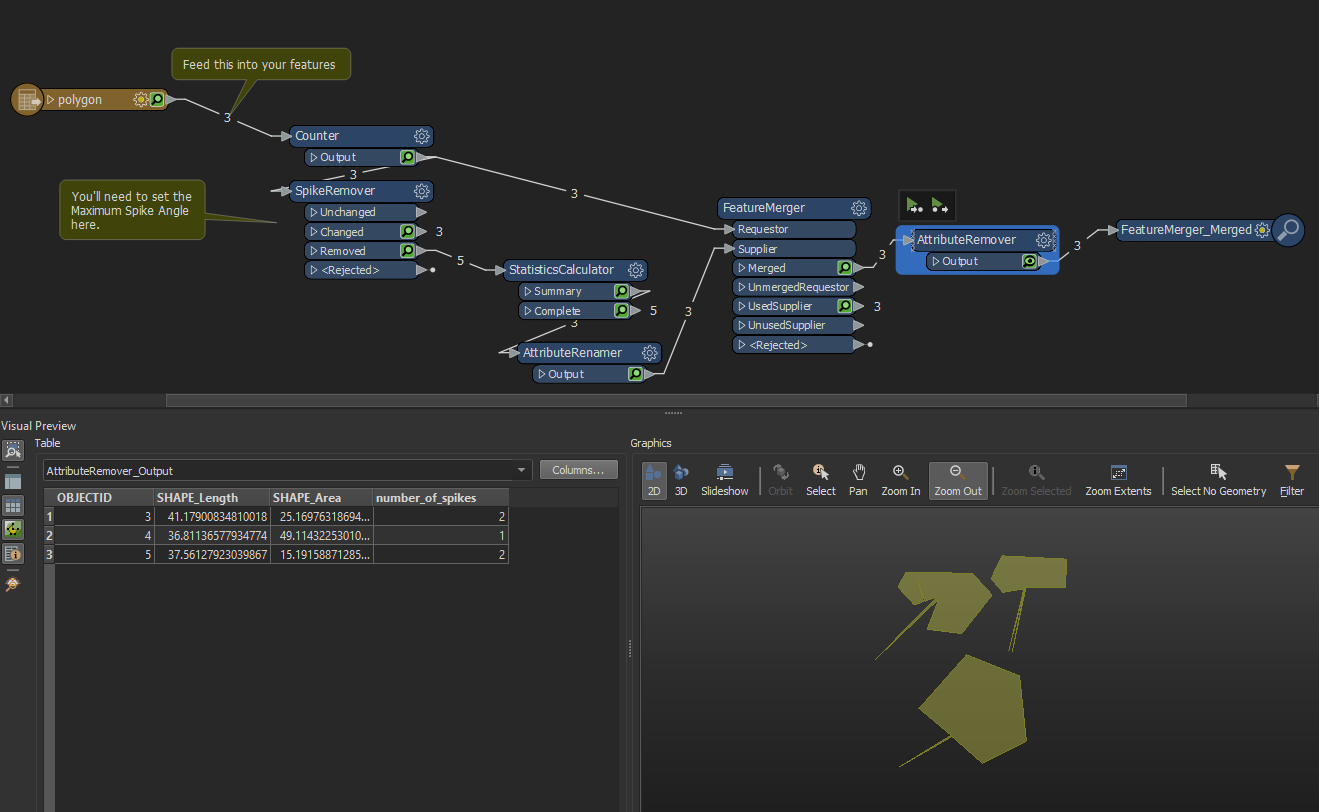I have a dateset of polygons which I know includes some anomalies such as self-intersecting and spikes. I'd like to identify these and if possible count the number of instances of each type in a report.
I have tried following the FME guide on self-intersecting polygons but it does not seem to be working as I expected on my dataset. I'm not sure if its my setting in the GeometryValidator transformer or my base data that is at fault.
Any guidance would be much appreciated.
I'll include some images of the types of issues I'd like to identify along with the workbench I created and some sample data:
